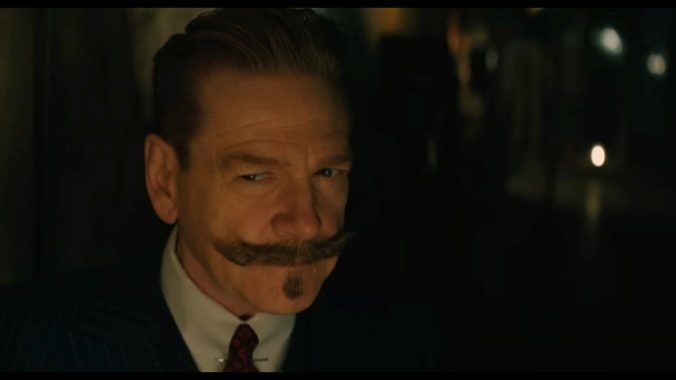Hercule Poirot Is Kenneth Branagh’s Great Late-Career Solution

What does a consummate Shakespeare-trained actor and director do after Shakespeare? There is no true “after Shakespeare,” of course, even allowing for the trend cycles of popular filmmaking. The playwright’s work endures, and movie adaptations will continue even if not always at the same clip as, say, the 1990s, when Kenneth Branagh was the English-speaking world’s foremost cinematic Shakespeare steward, plus heir to Olivier, regular Oscar-nominee, handsome devil, all that rot. But after adapting (and playing major roles in) Henry V, Much Ado About Nothing, Hamlet, Love’s Labour’s Lost and As You Like It, perhaps Shakespeare feels to Branagh like a mountain already scaled (or maybe it’s just a bit more of a wait before he’s old enough to play King Lear; after all, he already played Shakespeare himself in the little-seen All Is True).
In any event, Branagh deemed himself fit for the barbarous caves of Hollywood franchise work with Thor, only the fourth entry in the then-nascent Marvel Cinematic Universe. From there, he attempted to reboot Jack Ryan, returned to Disney for their live-action Cinderella and an ill-fated YA adaptation, and dabbled in more personal projects. He even won a screenplay Oscar for his semi-autobiographical drama Belfast. From this trajectory, it’s possible to trace out a familiar story arc of big-budget triumph chased by acclaimed return to smaller-scale successes with a bit more soul. This narrative is also made somewhat irrelevant by Belfast being, in the parlance of the region, a bit shite.
Yet Branagh’s Disney career doesn’t make the case for him feeling at home in a plastickier magic kingdom, either; his YA adventure Artemis Fowl is gobsmackingly awful, a movie that appears afflicted with some sort of dark enchantment of inertia, Hell via a would-be franchise-starter. In the midst of all this three-for-them-one-for-me confusion, however, Branagh has found his calling, a peculiar mix of big-budget franchising and faux-prestige: Making well-appointed, star-studded adaptations of Agatha Christie stories, starring Branagh himself as the elaborately mustachioed and accented detective Hercule Poirot. Did it matter that, as the annoying people say on social media, no one asked for this? It did not! The snarkier audiences were scarcely done hooting at Gal Gadot’s (honestly kind of innocuous) delivery-boast of “enough champagne… to fill the Nile!” in last year’s pandemic-delayed Death on the Nile when Fox unveiled a teaser for A Haunting in Venice, the third Poirot adventure, reskinned as a spooky haunted-house movie for fall. It’s playing in theaters nationwide and eyes will continue to roll.
And yet: In this old-fashioned mystery series, Branagh has found a calling – hoots be damned, or maybe just part of the ambience. Across three films, the formula remains largely unchanged: Poirot, already renowned as a master detective, finds himself in the midst of a murder, with a particularly prominent actor playing the victim and a large ensemble of mixed-use celebrities playing the various suspects. Poirot strolls officiously into the proceedings, makes his polite-yet-firm pronouncements, conducts interviews, fussily measures his breakfast eggs at some point and solves the case, which typically implicates multiple people (for various crimes and slights, if not necessarily always the murder at hand).
-

-

-

-

-

-

-

-

-

-

-

-

-

-

-

-

-

-

-

-

-

-

-

-

-

-

-

-

-

-

-

-

-

-

-

-

-

-

-

-








































